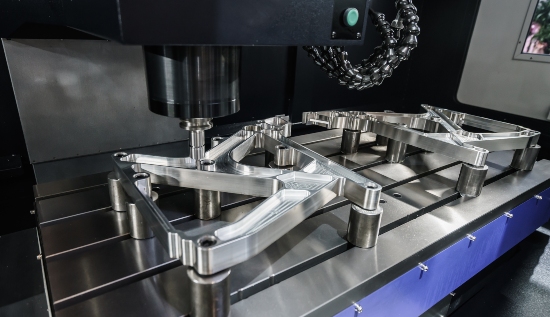Die-casting plants have been facing severe competition on an international level in recent years, in part because of the mounting pressures that are being exerted in the areas of both the economy and the environment. Die casting molds nodular cast iron can be made to be even more effective by modifying the parameters and decreasing the cycle times. This allows for greater efficiency. Improvements to the overall process through optimization
An exhaustive study of cycle times and service life is the first thing that needs to be done because this is the domain in which the greatest amount of potential can be actualized:Cycle times are derived from the completion of a large number of discrete process steps. Because it quickens the process of heat dissipation, adjusting the lengths of time that the mold spends cooling and spraying has the greatest potential for optimization. This is because it changes the length of time that the mold spends. The speed of such machinery cannot be increased because doing so would result in excessive wear and would be costly. The primary contributor to this issue is thermodynamic stress, which needs to be alleviated in order to either extend the material's useful life or improve its strength and toughness. Die-casting and mechanical parameters; processing plan; die-casting and mechanical parameters; maintenance plan. Plan for thermal balance treatment; materials; design of structural and die-casting technology. It is impossible to overstate the importance of this development. If the heat balance treatment plan is optimized and optimized to its fullest potential, it is possible to dissipate more heat from the die casting mold. This is made possible by optimizing the plan.
As a consequence, there is a reduction in the amount of cooling, the amount of time spent spraying, and the thermodynamic loads. All of the studies have concentrated their attention on the various treatment options available for achieving thermal balance.
The heat treatment of the material has an effect on a variety of different ranges of optimization. More specifically, it raises the thermal conductivity, which in turn nodular cast iron decreases the cycle times and the thermodynamic loads. The structure and the technology of die-casting have less of an impact on the optimization scope, the thermal stress in the die-casting mold is reduced, and the die-casting mold's working life is increased. These benefits can be attributed to the fact that the die-casting mold has a longer working life.

In addition to these conventional thermostatic treatments, there are also specialized structures, such as point injection - cooling, cooling with CO2 (carbon dioxide), heat pipes, inserts in the thermal equalization treatment opinions zinc die casting products, and bushings made of other materials. These structures are well known for their application in industry and are used for the processing of mold technology that is equipped with constant temperature treatment near the contour. This treatment is done in close proximity to the contour.
The heat that is added to the equilibrium space by each cycle is eventually expelled back into the cycle in which it was generated. Because of this starting cycle, the total number of heat flows that are greater than the equilibrium limit is equal to zero. This is because the limit represents a state of equilibrium. The die-casting molds, machines, and zinc alloy die-casting parts that were used in the experiment will have a significant impact on the results that are obtained from the study. When the weight of the zinc alloy die-casting parts is greater, a lower amount of heat energy should be introduced through the device that maintains a constant temperature in order to achieve the desired temperature. This is one of the possibilities that should be considered whenever zinc alloy is used.
When the weight of the die casting is substantial, a greater proportion of heat energy will be lost as a result of the spraying process than would otherwise be the case.
1) Techniques for improving the efficiency of thermal balance calculations
Spraying will cause a significant amount of heat energy to be released from the die-casting mold, which will be followed by the die-casting mold being subjected to thermodynamic loading. The release of this heat will be the result of the spraying process. Because of the shorter amount of time spent spraying, the number of cracks caused zinc die casting products by fatigue has been reduced. Because of the high thermal conductivity of the material, cycle times can be cut down, and thermal stresses can be alleviated. Because of this, the die-casting mold's service life is lengthened as a consequence.
2) The design of the casting process and the structural components
The structural and casting technology design that has been improved will result in an increase in the working life of the mold as a consequence of the decreased thermodynamic and mechanical loads. This is due to the fact that the loads have been reduced. There is no requirement for any additional research to be carried out on the problems that are brought about by the die-casting technology. The structural design of the mold will be determined in large part by the load that it is required to support. During this time, it was established that the primary processing areas consist of the plan for treating the thermal balance, the materials and structure, and the configuration of the die-casting technology.
This was done while this was going on. In this regard, the heat leveling thinning is of particular significance. The material has the potential to extend the useful life of the product by increasing its resistance to cracking, and it has the potential to cut cycle times by increasing its thermal conductivity. In addition to this, there is the possibility that the material will have a higher thermal conductivity. It has been demonstrated that die casting possesses the potential to generate significant economic benefits; however, in order to realize these benefits, the necessary steps that are required to make die casting a practical reality need to be taken.


